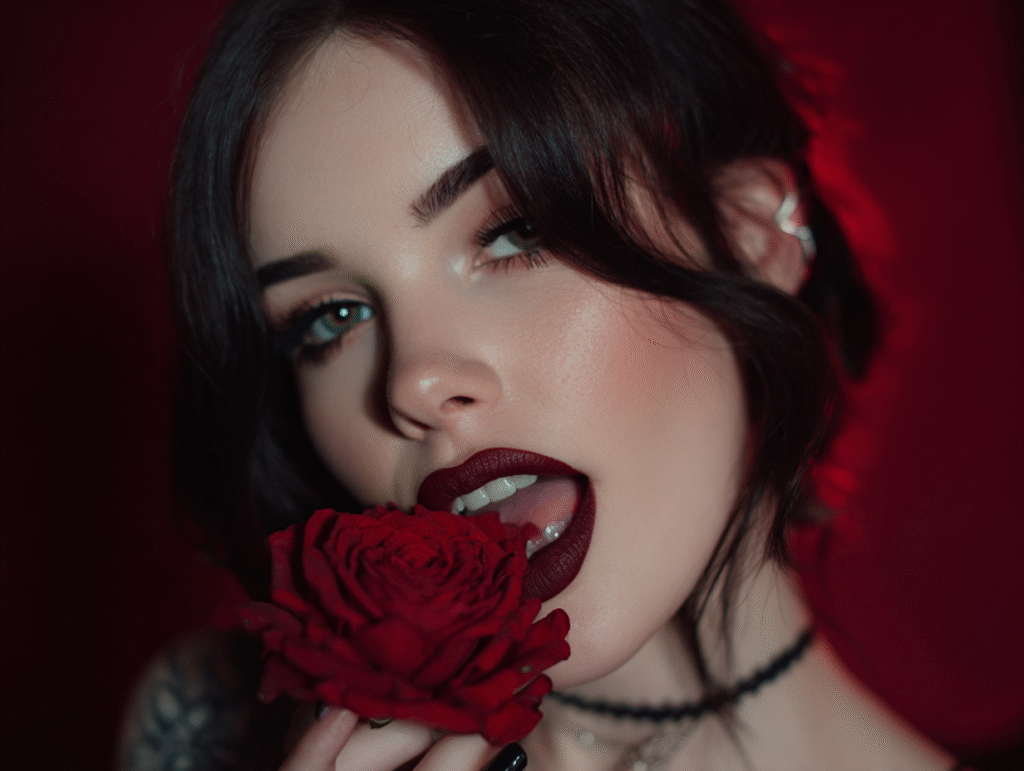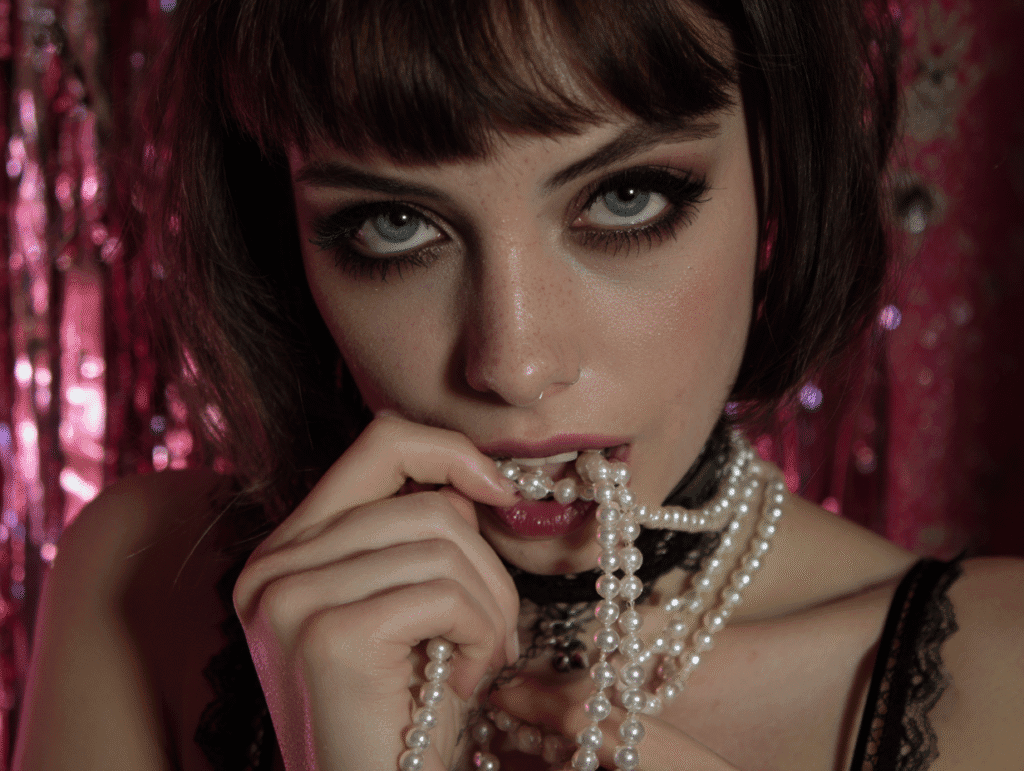The Essence of Romanticism: More Than Flowers and Clichés

Note: This article is the first part of a series on romanticism. Each piece stands on its own, but together they move from abstract foundations to tactical application. If you want the philosophy, start here. If you want the tactics, you can begin with Part 3 or Part 4 — and return to the earlier pieces later for the deeper context.
The Dangerous Beauty of Romanticism
When most men hear the word romanticism, they roll their eyes.
They picture heart-shaped chocolates, overpriced roses, cheap lines from Hollywood scripts.
They picture the nice guy — desperate, needy, buying affection he never earned.
I used to think the same.
To me, romance was weakness, a stain of sentimentality. Something men did when they didn’t understand women. Something that made them soft.
But here’s the truth: that isn’t romanticism. That’s cliché. That’s insecurity dressed up in ribbons.
Real romanticism is something else entirely.
It’s not weak — it’s dangerous. It doesn’t come from need, it comes from power. And when you understand it, when you use it deliberately, it becomes one of the most powerful amplifiers of attraction you’ll ever touch.
Romanticism isn’t about buying her approval.
It’s about creating a world where the air hums with meaning, where every glance feels like destiny, and where ordinary moments become unforgettable.
That’s the kind of romanticism this series is about.
Romanticism Isn’t What You Think
Romanticism has been poisoned by its imitators.
The world tells you it means buying flowers on Valentine’s Day, texting good morning beautiful like a broken clock, or writing sappy lines that sound like they came from a teenager’s diary. That’s not romanticism — that’s consumerism, routine, and fear wearing a cheap mask.
Let’s draw a clear line:
- Cheesy romance is predictable, needy, and mass-produced.
- It’s built on insecurity, and insecurity is the least romantic thing of all.
- True romanticism is rare, symbolic, and born of strength.
Cheesy romance tries to buy approval.
True romanticism creates experience — a moment she’ll never forget.
The difference is everything. One reeks of desperation. The other radiates power.
Romanticism as World-Making
At its core, romanticism is an act of rebellion.
It refuses to accept the dull machinery of everyday life — the commute, the bills, the scrolling feeds. Instead, it creates an alternate world. A world where everything is charged with meaning, where each moment hums like a string pulled tight.
When a man embodies romanticism, he becomes more than just himself. He becomes a storyteller. He frames reality. He gives shape to desire.
Think about it: the difference between a man and a romantic man is not money, looks, or status. It’s the way he turns a simple evening walk into something that feels like destiny. The way a casual glance across the table feels like a chapter in a larger story. The way silence itself becomes heavy with unspoken meaning.
This is what women crave — not the flowers, not the clichés, but the experience of stepping into a different reality with you. A reality where ordinary gestures become unforgettable. Where the mundane bends into myth.
A romantic man doesn’t give her a rose; he gives her a symbol. He doesn’t just kiss her; he makes her feel like time itself held its breath.
And this is why romanticism has been so misunderstood: the cheesy version copies the gesture but misses the meaning. True romanticism is not in the act itself, but in the frame around it.
This is why women can remember a single night years later — not because of what was done, but because of how it felt. A feeling of stepping into a heightened world. A feeling that she wasn’t just living her life, she was living a story.
That is romanticism: the art of world-making.
Core Components of Romanticism

Romanticism is not one thing — it’s a constellation. Different elements working together, feeding into each other, each amplifying the pull. You can’t fake it by copying one piece; you need to understand the whole.
Here are its core components:
Longing
At the heart of romanticism lies desire suspended in mid-air. The power of waiting, of almost, of not yet. Longing is what gives a kiss weight before lips even touch. It is the stolen glance across the room, the hand that hovers just before contact. Romance thrives not on instant gratification, but on anticipation stretched out like a taut bowstring.
Drama
Romance is rarely calm. It feeds on emotional highs and lows — the storm before the stillness, the silence after laughter. Every novel, every great love story, every song that makes your chest ache is built on drama. Women don’t fall for the flat line; they fall for the rollercoaster, the wild ride that feels like something worth remembering.
Symbolism
Nothing in romance is just what it is. A rose is not a flower — it is a burning heart. A letter is not ink on paper — it is proof of devotion. A glance is not just a glance — it is a promise, or a threat, or a secret. Symbols are the fuel of romanticism. They allow ordinary objects to carry the weight of myth.
Heightened Perception
Romanticism sharpens the senses. The way a streetlight halo catches in her hair, the sound of footsteps echoing through an empty hallway, the taste of wine lingering on her lips — all of it becomes amplified. The ordinary world becomes cinematic. This is what makes romance feel realer than real — because it’s not about what happens, but about how it’s perceived.
Put these together and you have the essence: longing that builds, drama that cracks open the heart, symbols that immortalize the moment, and a heightened perception that makes the mundane feel eternal.
This is why romanticism stays with us long after the night is over. Because it’s not about facts or events. It’s about myth, meaning, and the emotions carved into memory.
Why We Crave Romanticism
Human beings are not built to survive on facts alone. We are storytelling creatures. We need myth, drama, and symbols to make life worth living. That is why romanticism endures — why it refuses to die, no matter how cynical or modern the world becomes.
Romanticism feeds this hunger. It lifts us out of the mundane and lets us taste transcendence. It tells us: this is not just another night, this is fate. It whispers: you are not just a man and a woman, you are characters in a story bigger than yourselves.
For women, this craving is even sharper. Romanticism allows them to feel both safety and thrill at once. The safe part: he cares, he notices, he creates meaning. The thrilling part: he desires, he risks, he frames it as something more than flesh. That paradox is intoxicating.
For men, true romanticism transforms desire into legacy. It’s not just wanting her body — it’s wanting the story that goes with it. The kiss that is remembered, the night that becomes legend. Romanticism makes seduction more than conquest — it makes it art.
This is why romance novels outsell every other genre. This is why love songs are written endlessly. This is why people still replay old memories of candlelit nights or whispered promises decades after the fact. Because in those moments, they were lifted out of time. They weren’t just living — they were living as myth.
Romanticism endures because it gives us something we cannot live without: the feeling that our desires are not random, but meaningful. That our attraction isn’t just animal, but sacred. That love isn’t just chemistry, but destiny.
And that is why to dismiss romanticism is to misunderstand one of the deepest human cravings.
So let’s strip away the confusion once and for all: romanticism is not weakness. It is not buying gifts to bribe her affection. It is not cheesy lines rehearsed from a movie.
Romanticism is power.
It is the art of shaping reality into myth. It’s the difference between being just another man she forgets, and being the man who lingers in her memory like a scar that never fades.
The men who sneer at romance confuse cliché with truth. They see the cheap imitation and think it’s the real thing. But a true seducer doesn’t reject romanticism — he reclaims it. He understands it as a force that elevates attraction, deepens desire, and leaves a mark no other man can erase.
And if you want to wield that force, you need to know why it works. Because romanticism is not random. It runs on psychological mechanisms that hook into the female mind like wires.
In the next part, we’ll break those open.
We’ll see how projection, limerence, and longing fuel obsession. We’ll see why women crave romance as both safety and thrill. And we’ll see the hidden reasons why they don’t just enjoy romanticism — they need it.
Meet me there,
Dorian Black
Next: The Psychology of Romanticism: Why It Works
Frequently Asked Questions
What is the true essence of romanticism?
The true essence of romanticism is not flowers, chocolates, or clichés. It’s the art of turning ordinary moments into myth — weaving longing, symbolism, and meaning into desire so that an experience becomes unforgettable.
Why do most people misunderstand romanticism?
Because they confuse it with cheesy gestures or desperate “nice guy” routines. True romanticism isn’t weakness. It comes from power, timing, and presence — not from buying approval.
Is romanticism the same as being romantic?
Not exactly. Being “romantic” often means surface-level gestures (dinners, gifts). Romanticism is deeper: it’s about world-making, atmosphere, and creating moments that feel like destiny.
How does romanticism differ from lust?
Lust is raw, primal desire — powerful in its own right. Romanticism reframes that desire into something symbolic and larger-than-life. The most powerful seduction comes when lust and romanticism are fused.
Can romanticism really increase attraction?
Yes. Romanticism works on psychological levels — projection, longing, and symbolism — that bypass resistance and make desire feel inevitable. It doesn’t just attract; it leaves a mark that lingers.
Is romanticism manipulative?
Not when it’s genuine. The true seducer elevates a woman, leaving her better than before. Romanticism becomes manipulative only when used without care or meaning.